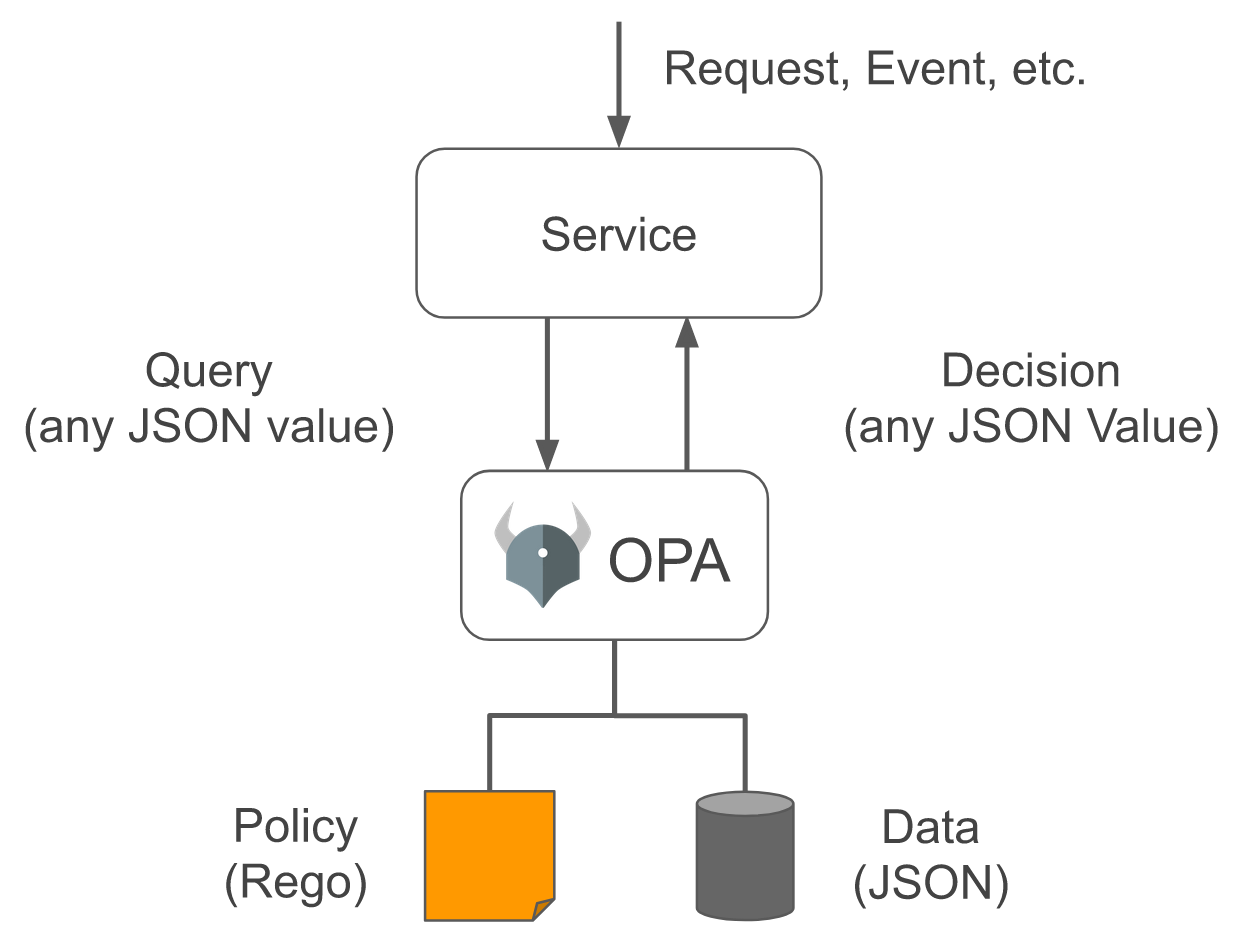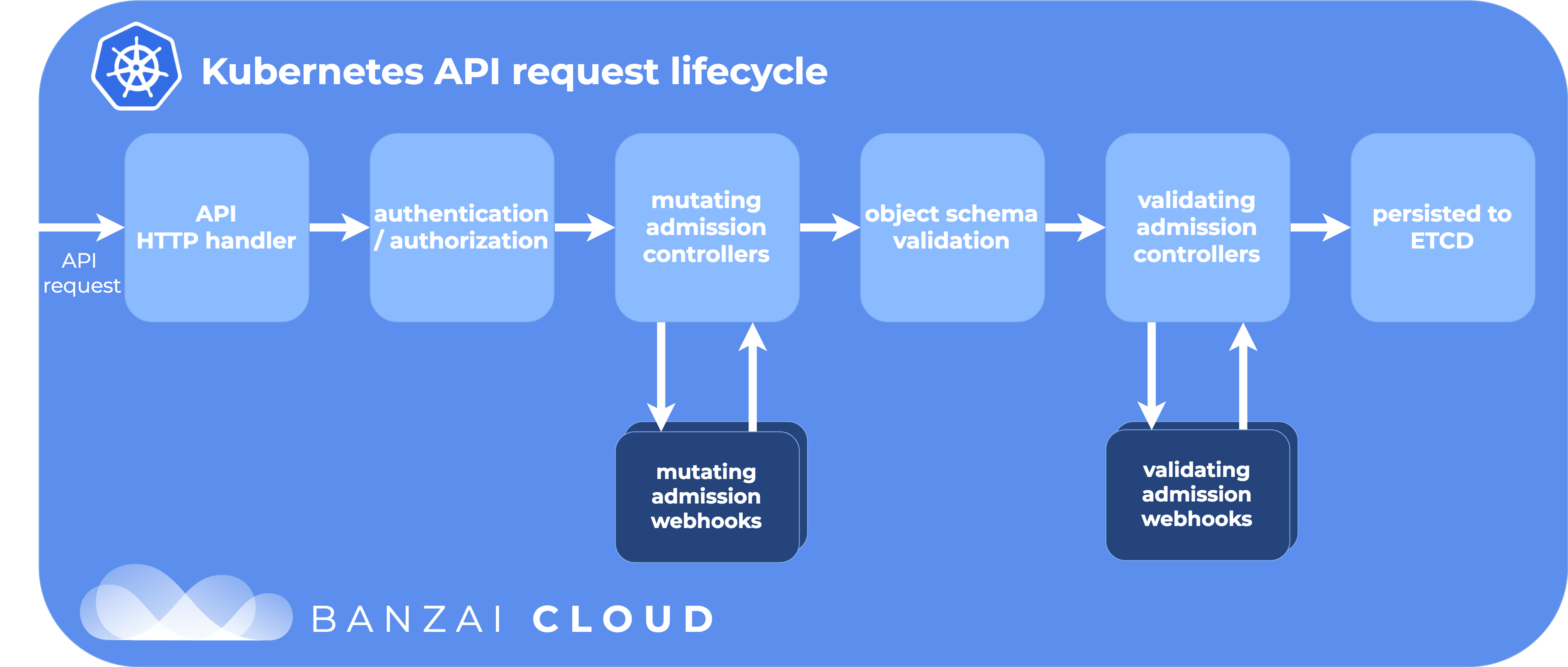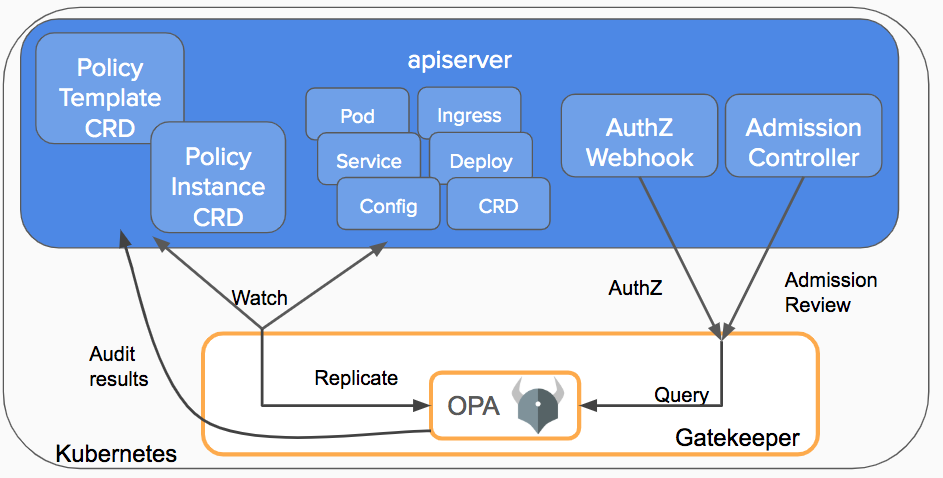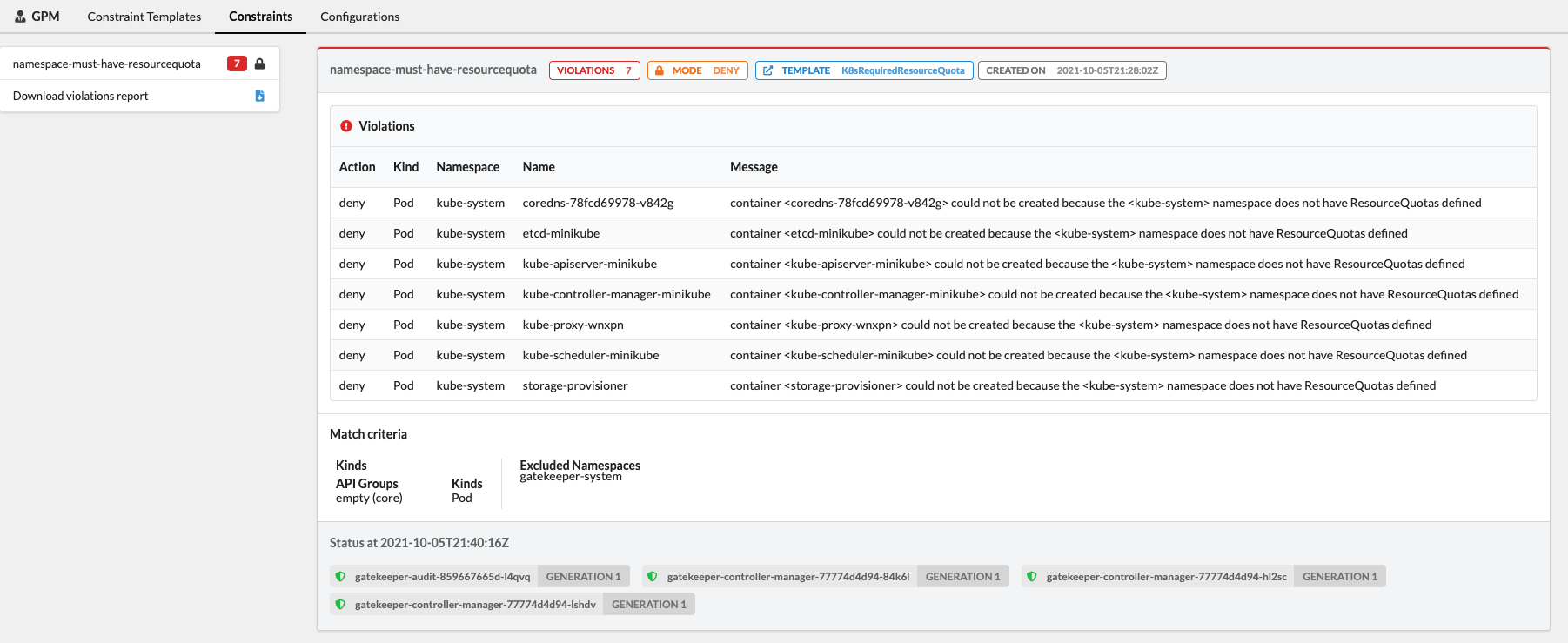OPA Gatekeeper in the Admission Controllers' World
A couple of weeks ago, while surfing the Cloud Native Computing Foundation (CNCF) website, I stumbled upon one of its graduate projects - Open Policy Agent (OPA). After reading some documentation on OPA’s website, I got interested and decided to explore this open-source project.
OPA consists of a general-purpose policy engine. The main goal is to make decisions based on Input, Policies (written in Rego), and Data while decoupling the logic from the services' code.

There are many use-cases for OPA. Since I’ve been investing in learning more about Kubernetes, I opted for a project that integrates OPA and Kubernetes - Gatekeeper.
Kubernetes Admission Controllers⌗
Admission Controllers intercept and process requests made to the Kubernetes API. This means that if a request is denied, it’s not persisted in etcd nor executed.
Some well-known admission controllers are ResourceQuota, LimitRanger, NamespaceLifecycle, etc. They can be enabled with the enable-admission-plugins flag in the kube-apiserver.
There are, however, two special admission controllers: MutatingAdmissionWebhook and ValidatingAdmissionWebhook. These controllers allow the extension of Kubernetes API functionality via webhooks.

Admission Controllers can be classified as “mutating”, “validating” or both. Mutating controllers may modify the objects they admit. Validating controllers return a binary response - yes or no - according to the object contents.
OPA Gatekeeper⌗
Gatekeeper v3.0 allows the creation of policies based on Custom Resource Definitions (CRDs). It provides validating and mutating admission control through a customizable admission webhook.

Hands-on Example⌗
Let’s imagine that you want to enforce the following policy:
Pods can only be launched in a Namespace with a ResourceQuota defined.
How can we enforce it in our Kubernetes cluster? In this hands-on example, we will go through it step by step. You can find the source code in my Gatekeeper GitHub repository.
Bootstrap⌗
Create Kubernetes cluster with one admission plugin only:
minikube start --extra-config=apiserver.enable-admission-plugins=NodeRestriction
Install Gatekeeper with Helm (or other options):
helm repo add gatekeeper https://open-policy-agent.github.io/gatekeeper/charts # first time only
helm install gatekeeper gatekeeper/gatekeeper -n gatekeeper-system --create-namespace
Create And Test Policy⌗
In this example, we will need to sync some data to OPA. It’s not possible to know if a Namespace has a ResourceQuota without having access to all ResourceQuotas. The sync is possible with the Config resource:
# sync.yaml
apiVersion: config.gatekeeper.sh/v1alpha1
kind: Config
metadata:
name: config
namespace: gatekeeper-system
spec:
sync:
syncOnly:
- group: ""
version: "v1"
kind: "ResourceQuota"
kubectl apply -f sync.yaml
Then, we will create a ConstraintTemplate1 that contains the Rego policy:
# template.yaml
apiVersion: templates.gatekeeper.sh/v1beta1
kind: ConstraintTemplate
metadata:
name: k8srequiredresourcequota
annotations:
description: Requires Pods to launch in Namespaces with ResourceQuotas.
spec:
crd:
spec:
names:
kind: K8sRequiredResourceQuota
targets:
- target: admission.k8s.gatekeeper.sh
rego: |
package k8srequiredresourcequota
violation[{"msg": msg}] {
input.review.object.kind == "Pod"
requestns := input.review.object.metadata.namespace
not data.inventory.namespace[requestns]["v1"]["ResourceQuota"]
msg := sprintf("container <%v> could not be created because the <%v> namespace does not have ResourceQuotas defined", [input.review.object.metadata.name,input.review.object.metadata.namespace])
}
kubectl apply -f template.yaml
Finally, we create the Constraint, based on the previous ConstraintTemplate:
# constraint.yaml
apiVersion: constraints.gatekeeper.sh/v1beta1
kind: K8sRequiredResourceQuota
metadata:
name: namespace-must-have-resourcequota
spec:
match:
kinds:
- apiGroups: [""]
kinds: ["Pod"]
excludedNamespaces:
- gatekeeper-system
kubectl apply -f constraint.yaml
We are ready to test it!
To start, we will create a Namespace without a ResourceQuota and try to launch a Pod in it:
# ns-without-quota.yaml
apiVersion: v1
kind: Namespace
metadata:
name: unbounded-namespace
# blocked-pod.yaml
apiVersion: v1
kind: Pod
metadata:
name: blocked-pod
namespace: unbounded-namespace
spec:
containers:
- image: nginx
name: blocked-pod
kubectl apply -f ns-without-quota.yaml
kubectl apply -f blocked-pod.yaml # Should give Error
The second kubectl apply should give an error (Error from server). If it does, our desired policy is being enforced as it should.
Now let’s try to launch a Pod in a Namespace with a ResourceQuota associated:
# ns-with-quota.yaml
apiVersion: v1
kind: Namespace
metadata:
name: bounded-namespace
---
apiVersion: v1
kind: ResourceQuota
metadata:
name: bounded-namespace-quota
namespace: bounded-namespace
spec:
hard:
requests.cpu: 1
requests.memory: 1Gi
# allowed-pod.yaml
apiVersion: v1
kind: Pod
metadata:
name: allowed-pod
namespace: bounded-namespace
spec:
containers:
- image: nginx
name: allowed-pod
resources:
requests:
cpu: 0.5
memory: 500Mi
kubectl apply -f ns-with-quota.yaml
kubectl apply -f allowed-pod.yaml # Should work
This time the Pod should be successfully launched since we are not violating the namespace-must-have-resourcequota Constraint.
What about previous Pods that were launched before the Constraint was created? Gatekeeper has an Audit functionality that allows you to see violations.
For example:
kubectl describe K8sRequiredResourceQuota namespace-must-have-resourcequota
Name: namespace-must-have-resourcequota
Namespace:
Labels: <none>
Annotations: <none>
API Version: constraints.gatekeeper.sh/v1beta1
Kind: K8sRequiredResourceQuota
Metadata:
(...)
Spec:
Match:
Excluded Namespaces:
gatekeeper-system
Kinds:
API Groups:
Kinds:
Pod
Status:
(...)
Total Violations: 7
Violations:
Enforcement Action: deny
Kind: Pod
Message: container <coredns-78fcd69978-7vzw4> could not be created because the <kube-system> namespace does not have ResourceQuotas defined
Name: coredns-78fcd69978-7vzw4
Namespace: kube-system
Enforcement Action: deny
Kind: Pod
Message: container <etcd-minikube> could not be created because the <kube-system> namespace does not have ResourceQuotas defined
Name: etcd-minikube
Namespace: kube-system
(...)
Events: <none>
In this case, we can see seven violations in the kube-system Namespace that we did not exclude in our Contraint.
Bonus: Gatekeeper Policy Manager⌗
There is an interesting read-only web UI called Gatekeeper Policy Manager (GPM). It’s possible to run locally in a container or deploy in the cluster with Kustomize or Helm:
git clone https://github.com/sighupio/gatekeeper-policy-manager.git
helm install gpm gatekeeper-policy-manager/chart --namespace gatekeeper-system --set config.secretKey=dummy
The result:


Cleanup⌗
helm list -A # list helm releases
helm uninstall gpm -n gatekeeper-system
helm uninstall gatekeeper -n gatekeeper-system
minikube delete
Alternatives⌗
Some alternatives to Gatekeeper that I did not explore but also look promising:
- Kyverno (CNCF Sandbox Project)
- Kubewarden (SUSE Rancher)
Final Remarks⌗
OPA and Gatekeeper can be a good last line of defense by enforcing policies before anything is persisted. The Audit functionality can also be useful to detect existing violations that would otherwise be hard to find.
Go ahead and explore the OPA Gatekeeper Library GitHub Repository that contains examples that can serve as inspiration.
-
If you want to learn more about the fields of a ConstraintTemplate, check the OPA Constraint Framework. ↩︎